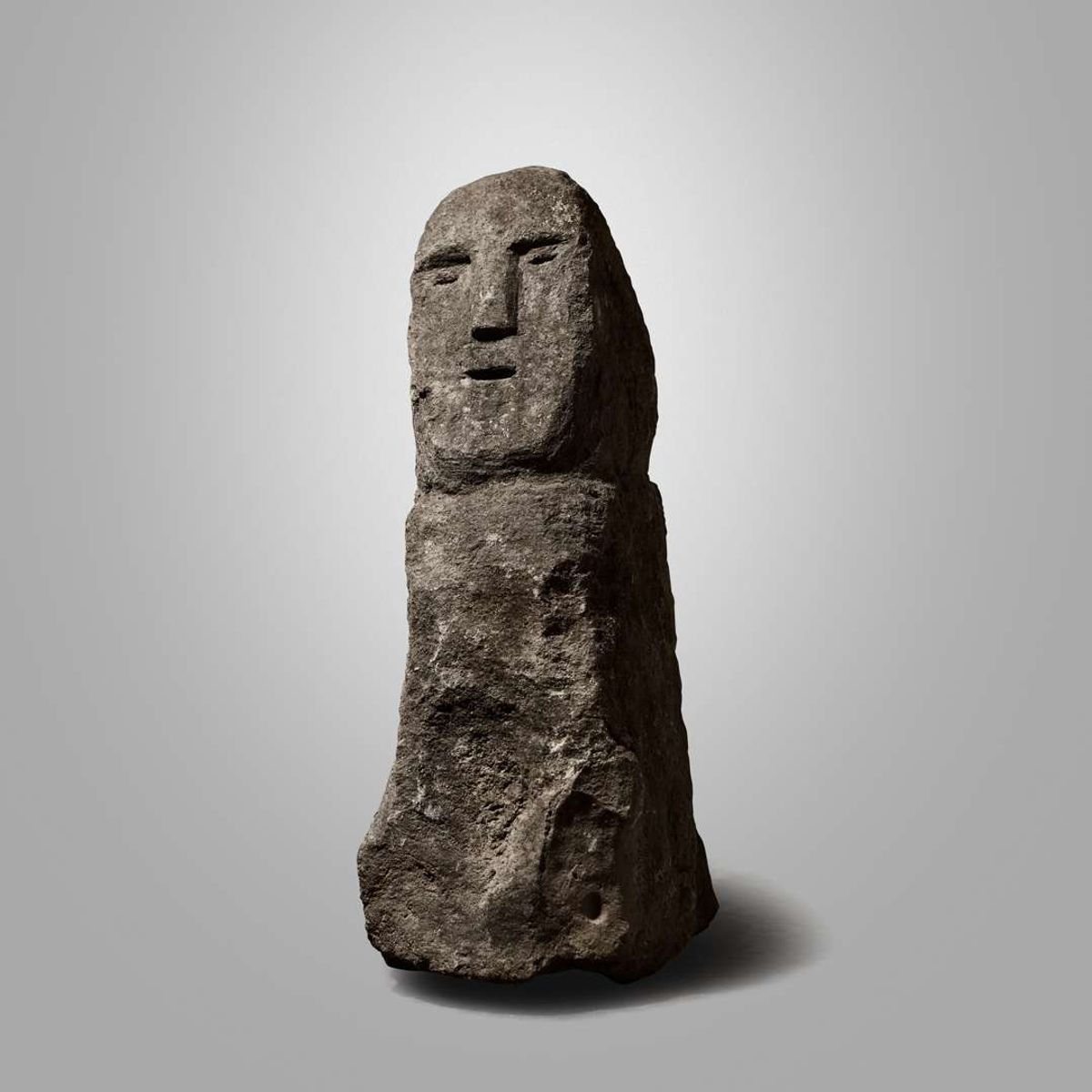A granite megalith auctioned in London as a Bronze Age Corsican statue has been called a “fake” by French heritage cultural authorities.
On 13 March, the 63cm-high statue was sold by a Spanish dealer through Lyon & Turnbull for €22,500. It was said to be from the end of the third millennium BC, “reminiscent of the steles found at the site of Filitosa, in the south of the [Mediterranean] island, which are among the first known human-like statues.”
Corse Matin, a local newspaper, published strong reactions to the sale from the scientific community. “The work of our historians”, who monitor the cultural heritage of the island, “allows us to affirm that this is a fake without any possible doubt,” said Anne-Laure Santucci, a member of the Corsican council in charge of culture and heritage.
Speaking to The Art Newspaper, the archaeologist Franck Leandri, a former representative of Corsica’s culture ministry and the author of a book on its megaliths, says that on the basis of the catalogue photographs, he “can unequivocally state that there is no way this carving could be authentic” and that it is, instead “only a pale copy”.
Leandri also notes what he describes as the “crude fabrication” of the sculpture. “It is much too small and has nothing to do with the proportions of any of the hundred known statues [of this kind in Corsica],” he says. “The face is quite rudimentary and the style of the almond eyes indicates it is a recent work.“ He adds that the expected “protuberances, indicating the presence of a helmet on the ears, are missing”.
The archaeologist adds that he “was surprised he had not been consulted before the sale, which could have avoided a lot of trouble”, and that he is “really astonished that such a clumsy copy could be accepted as a work of art”.
Laetitia Deudon, the head of archaeology in Corsica, says she was also not consulted ahead of the sale, which would have allowed her team to examine “the origin of the stone and the carving marks”. She continues: “We were alerted a few days before by locals, wondering how a piece of Corsican heritage, which is protected, could turn up in an auction overseas. We are now wondering if it was initially a forgery or just an innocent copy made by an artist or an amateur.”
In a statement to The Art Newspaper, a spokesperson for Lyon & Turnbull said the auction house “remains confident of the authenticity and dating of the sculpture” and referenced “comprehensive approved reports supporting its age and provenance”.
The spokesperson added: “Furthermore, the piece was thoroughly vetted at major art fairs and has been handled by respected specialist dealers and collectors.” The auction house declined, however, to provide The Art Newspaper with details of the forensic reports or their authors.
The catalogue for the sale states that the auction house has a “certificate” from the International Association of Dealers in Ancient Art (IADAA), but a spokesperson for IADAA told The Art Newspaper that this “only states that the object was checked against the Interpol database of stolen art and has nothing to do with authentication”.
There is no information in the catalogue on the statue’s origins and Deudon says that her team have “found nothing in [their] archives about such a discovery”. The catalogue notes only that, since 1972, the object has been in the hands of two collectors, named Wolfgang Meyn, in Soest (near Dortmund, Germany) and Rob Fens, in The Netherlands, before being purchased by the Spanish dealer in 2023.
Deudon adds that “if it was genuine, it could mean that it has been looted and smuggled out of the island, as the exportation of archeological objects is totally forbidden”.
Around 800 megalithic monuments have been found on Corsica to date, with approximately 100 of those being menhirs with a human face, featuring a prominent chin as well as eyebrows and a nose formed in a “T” shape. The historical function of the menhirs is a matter of debate, though Leandri says they were created “to honour the military elites gaining access to land and natural resources”. They are also adorned with swords, daggers, shields, helmets and other armour.


